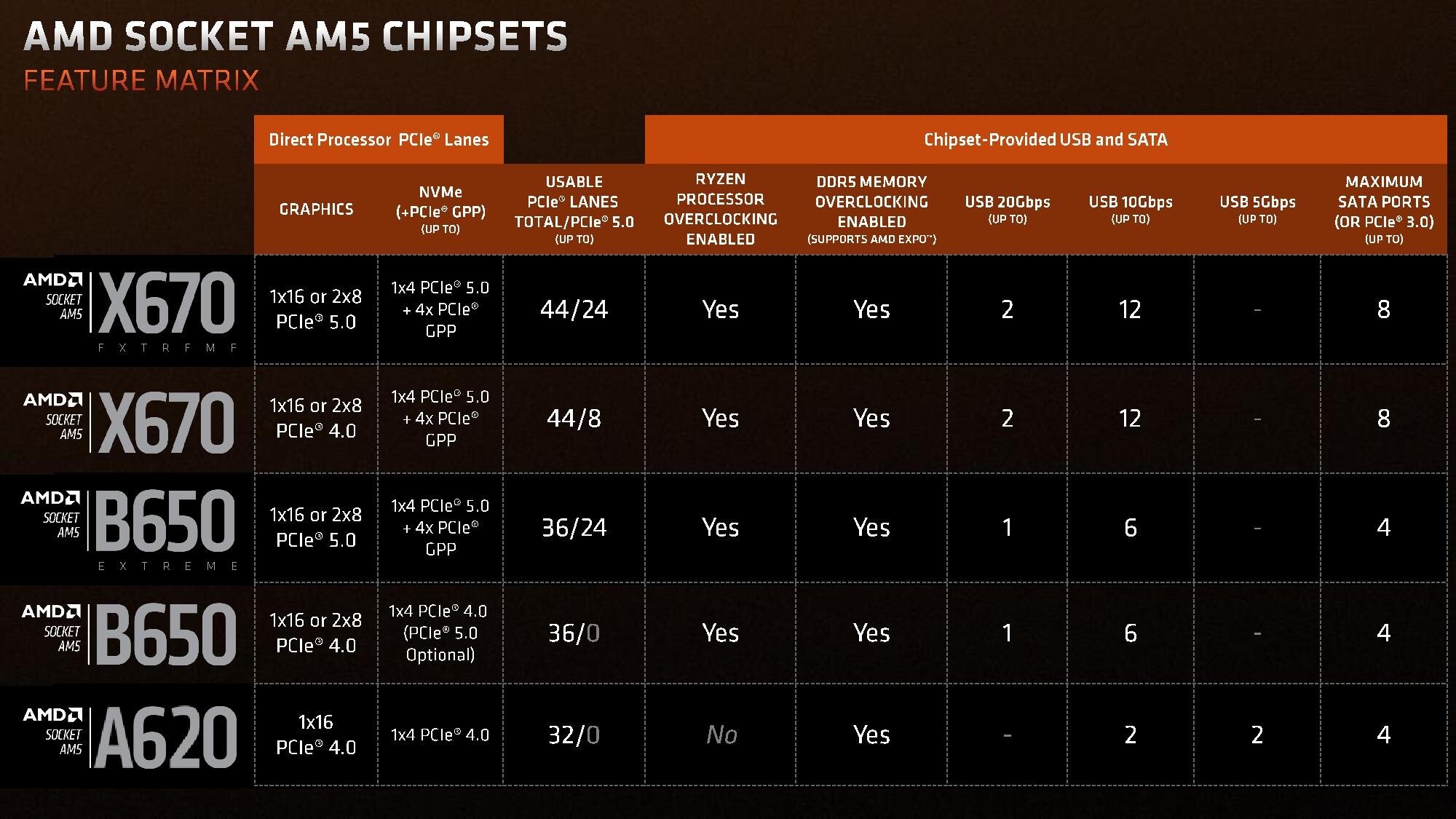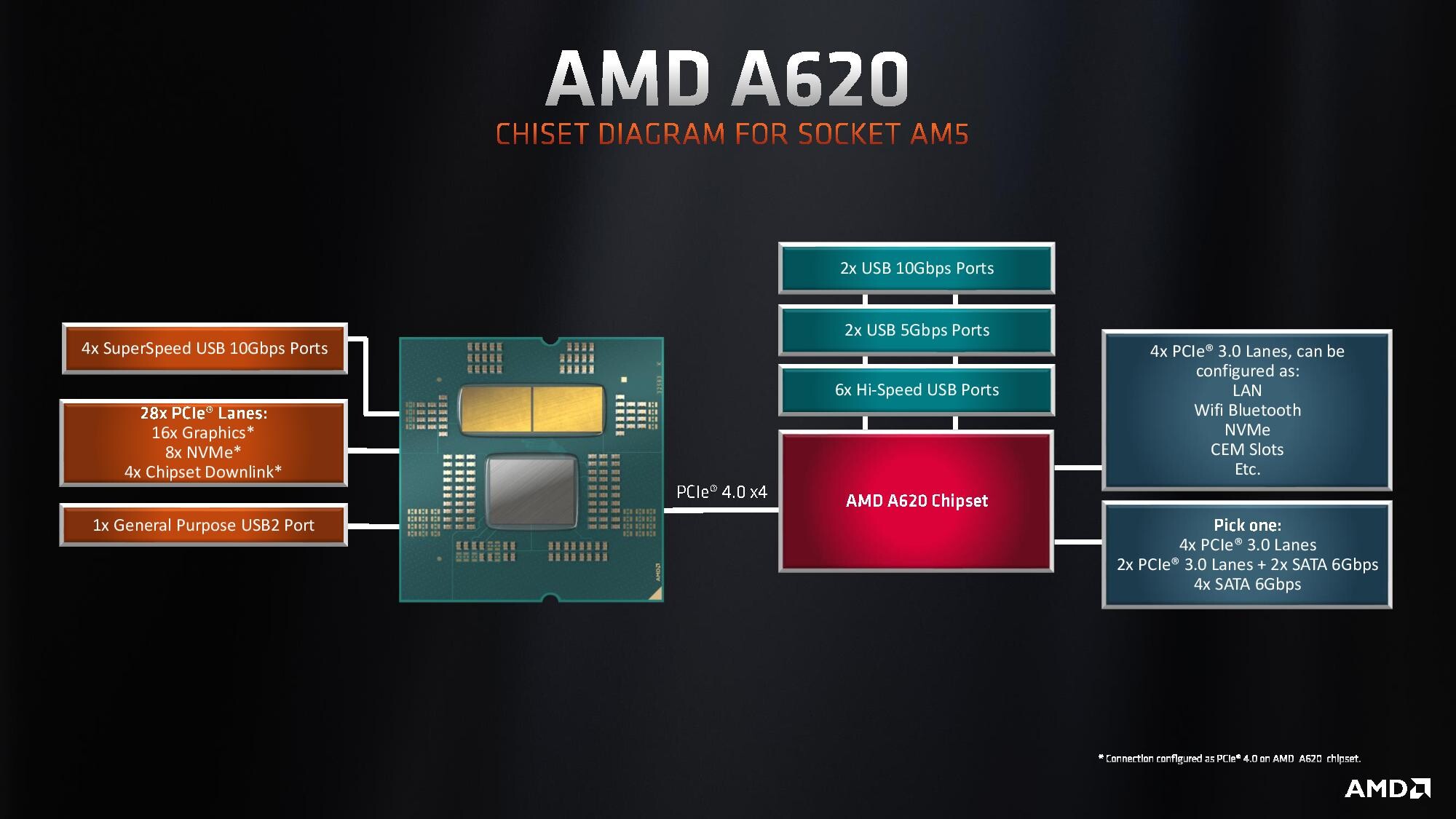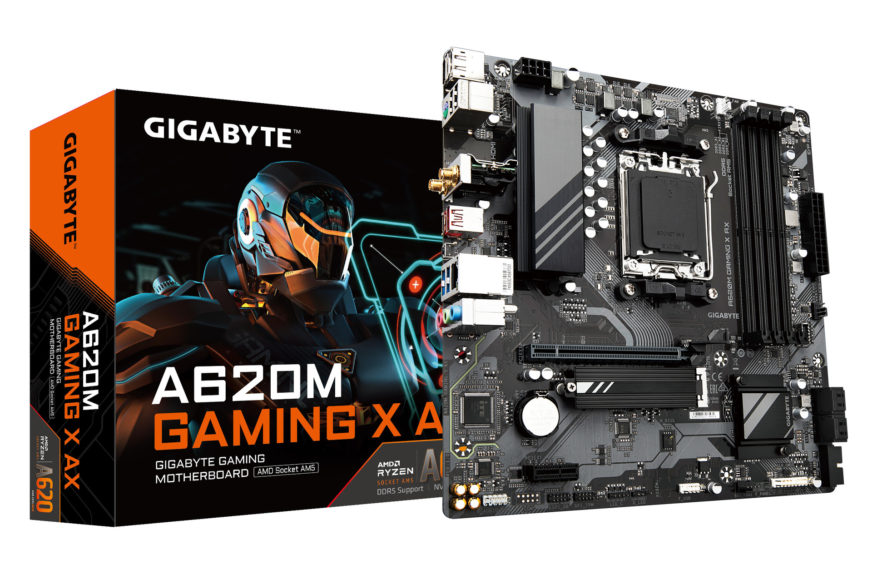AMD releases official specs for the new low-end chipset
Last Friday, the last day of Q1, low-cost AM5 boards for Ryzen 7000 processors based on the low-end A620 chipset were released by all the manufacturers in a coordinated fashion (we’ve put together an overview of the models here), but AMD itself didn’t make any announcements at first, so we didn’t have exact specs. These have been published now and include one surprising thing which makes the A620 better than expected.
The official presentation from AMD states that the A620 platform is supposed to make the new processors (Ryzen 7000) available to “everyone” at a lower price, with the cheapest such boards starting at 85 USD. However, these boards will be most suitable for 65W processor models, i.e. those without the “X” suffix, as they typically have weaker voltage regulation (power supply) for the CPU. The more expensive A620 models may be a bit beefier in this regard, but that’s something that will only be clear after testing.
Officially AMD mainly expects 65W models to be used with these boards. While those with higher TDP can be installed in the boards, VRM limitationss may cap the maximum multi-threaded performance (especially with 170W processors). According to AMD, however, gaming performance should mostly be unaffected, as the CPU is typically not fully loaded in those. You won’t usually find big differences in games between CPUs limited to, say, 105 W and 170 W, in reviews.

No CPU OC, but memory OC, DDR5-6000, XMP and EXPO
An important limitation is that A620 chipset boards do not support overclocking – you can’t change the multiplier and BCLK or use overclocking via Precision Boost Overdrive. Also, Curve Optimizer is not supported. On the other hand, memory overclocking is possible. Directly in the official specs it is stated that you can overclock manually as well as through XMP and EXPO profiles. According to AMD, most A620 platform boards should support up to DDR5-6000 with memory using EXPO profiles, as long as only one module per channel is installed (but this might be with specific memory kits).

Connectivity
AMD has published a schematic of the A620 chipset’s features and connectivity that finally clarifies its capabilities. The A620 chipset itself provides up to 10 USB ports – six 480Mb/s USB 2.0, two 5Gb/s USB 3.0 and a pair of 10Gb/s USB 3.2 Gen 2 (but note that significant number of boards do not use this capability and are limited to 5Gb/s USB). This is just the chipset connectivity, the Ryzen 7000 processor can also add up to four 10Gb/s USB 3.2 Gen 2 and one USB 2.0.
The A620 chipset provides only PCI Express 3.0 lanes, of which it has eight. Four can be used for PCIe 3.0 ×1 slots (or PCIe 3.0 ×2 M.2 slots), Wi-Fi, Ethernet and so on. The remaining four lanes can optionally be configured as either PCIe 3.0 or SATA 6Gb/s ports. Boards with the A620 chipset can provide four, two, or zero (this choice probably will not be common) SATA ports, which then determines the number of these PCIe 3.0 lanes that the board has left for other purposes – so the total with the previous ones can usually be 4–6, rarely 8.
However, additional PCI Express 4.0 lanes are added by the processor. It provides a PCIe 4.0 ×16 slot for the graphics card on A620 boards (the ×8/×8 split is not possible), as well as a pair of PCIe 4.0 ×4 interfaces for NVMe SSDs in the M.2 slots. AMD does state in the comparison chart that the A620 boards will only have one such slot, but there are exceptions to this. Also, there is at least one board (Biostar A620MP-E Pro) that makes the PCIe 4.0 lanes from one of these interfaces available as PCIe 4.0 ×1 slots.

What is surprising about the specifications is the connection between the A620 chipset and the processor in the AM5 socket (the so-called uplink). We expected a downgrade to PCI Express 3.0×4, but according to AMD’s specs the chipset uses twice as fast PCI Express 4.0×4 uplink (8 GB/s in both directions minus overhead), which matches what is used for the higher-tier X670(E), B650(E) and also the X570 chipsets. Devices and SSDs connected to the chipset should thus virtually never be limited by the bandwidth between the chipset and the CPU, because there simply aren’t that many lanes leading out of the chipset.
A620 is not rebranded B550
When the A620 specs leaked, we speculated that the chipset could use silicon originally designed for the B550 AM4 chipset. But judging by the PCIe 4.0 uplink this is not true and apparently it is a new silicon. Or rather, there were earlier reports that the first boards will use Promontory 21 silicon, which is also used in B650(E) and X670(E), and then a new tailor-made silicon will come to the market, which will be cheaper to make (parameters should be the same however).
According to the first photos of the PCB without a heatsink, the first wave of boards released now has that partially disabled Promontory 21 silicon (it will look the same as B650 if you remove the heatsink). This could explain the relatively limited range of models, with most manufacturers releasing one, or two models (Asus, ASRock) at maximum, if we ignore the variations with and without Wi-Fi. It’s likely that more A620 boards will be added in the coming months, but it’s possible that manufacturers are waiting until that “native” version of the A620 with cheaper silicon is available.
Source: TechPowerUp
English translation and edit by Jozef Dudáš
⠀











